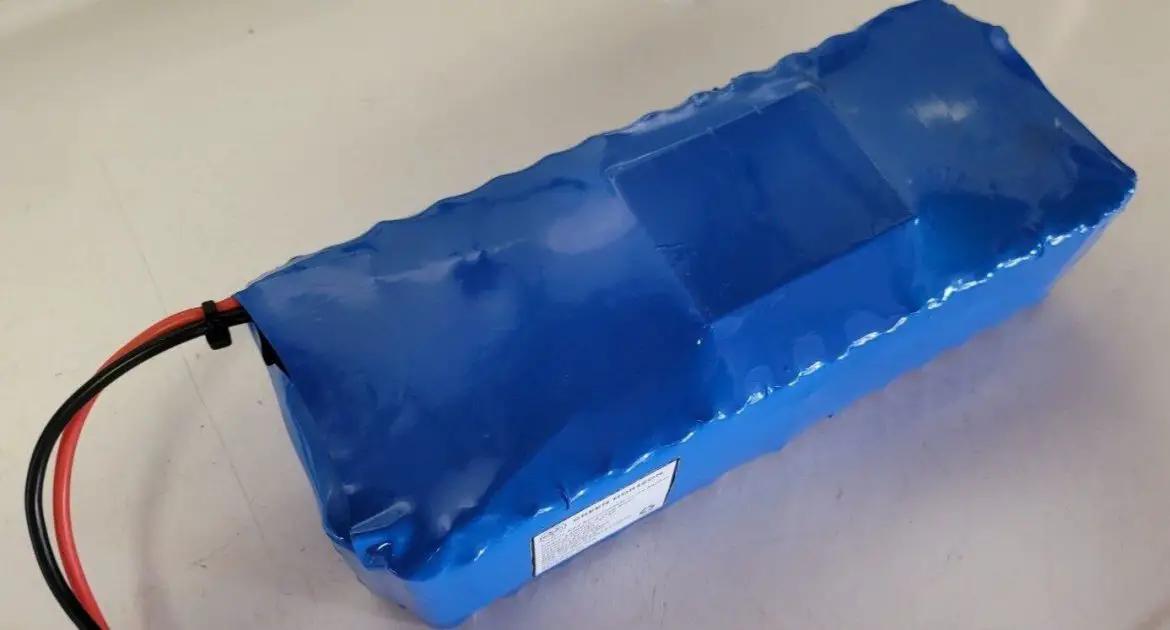E-bikes need quality batteries to provide reliable power, and these batteries can be expensive to buy pre-made. However, it may be possible to save money by building your e-bike battery from scratch.
This article will discuss the pros and cons of doing so, including the cost savings versus purchasing a pre-built battery. From understanding which components you need to put it all together, this article will provide an overview of what it takes to build a reliable and efficient e-bike battery from scratch.

Is it cheaper to build your E-bike battery?
If you have the required tools, creating your E-bike battery can be cheaper than purchasing a pre-made one.
The materials to build an e-bike battery cost roughly $200-250 if you have the tools. The DIY option is about half the price of a store-bought battery which can be $500-900. However, if you don’t have the workshop and tools, you could spend $380-500 to produce an e-bike battery up to 48 V 13 AH.
A custom-built battery can be tailored to fit the specific needs of your e-bike, whereas a pre-made option may require modification to your e-bike to make it work or the chance you may need multiple batteries to power your bike.
How long does it take to build an e-bike battery?
Building an E-bike battery should take approximately 5 hours if you have assembled a battery kit before. Still, if you are making the battery for the first time, you should allot 6-7 hours to ensure you don’t miss any steps in creating the lithium battery.
The main components of the battery:
Before you start building the battery, you will need to get the components for your battery. The main ones are:
• Battery Cells
• Battery Management System (BMS)
• Enclosure
You will also need a charger for the battery to maintain its power to move your e-bike consistently.
Battery cells explained:
The battery cells are the building blocks of the e-bike battery and come in various forms. Depending on your bike’s specific needs, you will want a high-density lithium-ion battery to offer the maximum battery power.
Battery management system:
The BMS system will oversee your battery’s power level and ensure it doesn’t overcharge or over-discharge. The BMS will also protect the battery from damage when the voltage falls too low, which can be caused by extreme weather conditions. This circuit board optimizes the stable performance of the battery.
Enclosure:
The enclosure for your battery is essential to ensure safety and maintain efficiency. You will need to consider the type of enclosure that can be used to house your battery and how the enclosure will attach itself to your e-bike design.
Some primary enclosures include luggage carrier style, bottle mount with locks, and a bike bag style enclosure for batteries. Enclosures can get large and bulky, but with careful selection, you can find one that will fit your e-bike.
You will also need to ensure your enclosure has an easy way to connect the charger to the battery management system to charge the cells. Enclosures built with an external port area for a charging cable are usually best.
Chargers:
The charger you use to charge the battery should match the voltage and type of battery cells used. It is best to purchase a good quality charger with high currents and an appropriate plug for the battery.
Pros and cons of building your e-bike battery:
Building the battery yourself means choosing the specific components for better quality and saving money. However, making your battery has risks, as it is essential to use suitable materials and follow safety procedures. If done incorrectly, this could injure or damage the bike.
Pros:
- Your battery will be completely customized to your bike and carry the type of power you want. You can produce something better than the factory model of your e-bike.
- You will save money, especially if you already have the tools to produce the battery.
- Once you have learned how to make the bike battery, it can get easier to perform repairs. It is also cheaper than repairing many models direct from the manufacturer.
- You can make money producing battery kits if a large group of people uses e-bikes in your area.
Cons:
- Working on the battery cells requires electrical knowledge and a light touch. You can damage battery cells accidentally with rough care.
- If you need to buy every tool for the build, you will likely run into expenses close to or exceeding the price of a new battery.
- Producing a battery can be hard work. If you need more time to dedicate to the job, it is much faster to buy a rebuilt battery.
Should you trust an aftermarket battery that is cheaper than a used build?
Cheaper e-bike batteries may be advertised with high amp hours for a fraction of the cost of a manufacturer like Samsung, Yoku Energy, LG, or OptimumNano Energy. These often come with poor-quality battery cells taken from factory-rejected stock or built with impure nickel strips. While these can arrive in good working order, they can experience heat damage, low range, and a considerably shorter lifespan.
Here are some final tips for reducing the cost of your E-bike battery:
Used components can be an excellent place to start, but always make sure you are using new battery cells.
Invest in a good quality charger to help the battery last longer.
Purchase smaller components like screws, wires, and connectors at your local hardware store.
Research online tutorials to see if anyone has designed a kit you can use for parts.
Look into regulated power sources, such as solar or wind power, which could provide you with charging options to save on electricity. A garage solar cell could be all that is needed to help you charge up your batteries and run your e-bike less expensively.
Using a regenerative braking system will improve your battery life if your e-bike is capable of this feature. Regenerative braking e-bikes can gain 10-20% extra range.
Conclusion:
DIY batteries can save money but require attention and knowledge to build correctly. The pros of building your battery are personalization, cost savings, and repairs. However, the cons include the expense of tools and materials and safety risks if not done carefully. Ultimately, whether or not it is cheaper to build your e-bike battery depends on your time and the tools you have on hand to complete the build. There are some excellent tutorials you can follow if you are a beginner, but it is essential to have a plan if you are looking to save money and complete the job accurately.
